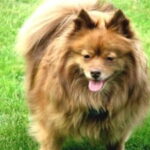The best description of a West Highland White Terrier was given by the late great Roger Caras, “When a West Highland White Terrier occupies the same room as you, he will constantly let you know of your good fortune.” This is the kindest way to put it. West Highland White Terriers or “Westies” are sure that the universe revolves around them – and sometimes, they may be right.
West Highland White Terriers are little all-white dogs with hearts and attitudes bigger than Texas. They make excellent companions for those who have the patience to appreciate their talents. They make great guard dogs and therapy dogs. More than one Westie owner can regale you of stories about the time a special Westie saved their life.
A Victim Of Their Own Success
Such a feisty, loyal and cute dog won a lot of admirers on both sides of the Atlantic. Unfortunately, Westies have had to pay the price for their own popularity, especially in America, where they were often bred for quantity and not quality. Since Westies are small and popular, they are one of the preferred breeds used by puppy mill owners.
As a result, it’s getting harder and harder to find a healthy Westie. It is one of the breeds most prone to diseases, genetic disorders and even allergies. Specifically, they are prone to bladder cancer, heart disease, cleft palate, Addison’s disease, hip dysplasia, hernias, irritable bowel syndrome, chronic ear infections, juvenile cataracts, diabetes and luxating patella. They even can get a lung disease peculiar to the breed.
Westies are often abandoned or surrendered to animal shelters through no fault of their own. Their owners usually don’t want to deal with the health, grooming and exercise needs of their dogs. Pet stores rely on people buying puppies on impulse and a Westie puppy is hard to beat in the Cute Olympics.
Although there is a growing trend to breed smaller and smaller “teacup” Westies, the average Westie is a solid, blocky terrier ranging anywhere from ten to twenty pounds. They are basically all white versions of the older Cairn Terrier. Unlike many other breeds of dogs shown with cropped ears, Westies naturally have pointed ears. The ears are floppy as puppies and then stick up as they age, but sometimes a Westie will live all of his or her life with semi-floppy ears.
Their heads give the appearance of looking too big for their bodies. They have very broad chests and short legs, easier for them to hunt their favorite quarry of rats and mice. Westies will instinctively go after any pet rodent, rabbit or any small creatures that scurries. Because of their short legs and deep chest, they sort of shuffle along when they walk or trot. But they cover a lot of ground very quickly.
Additional References:
“The Roger Caras Dog Book: A Complete Guide to Every AKC Breed.” Roger Caras. M. Evans & Company; 1996
“The Veterinarians’ Guide to Your Dog’s Symptoms.” Michael S. Garvey, DVM, et al. Villard; 1999.
Westie Rescue of California. “Westie Health Issues.” http://www.westierescueca.com/health.htm
Author’s own experience





